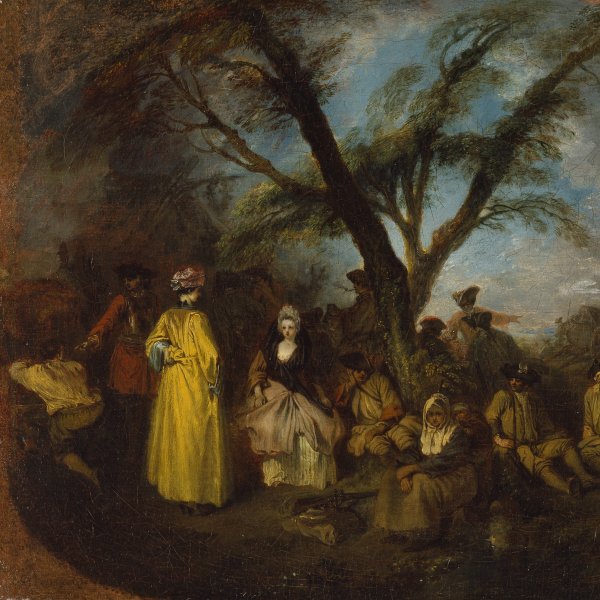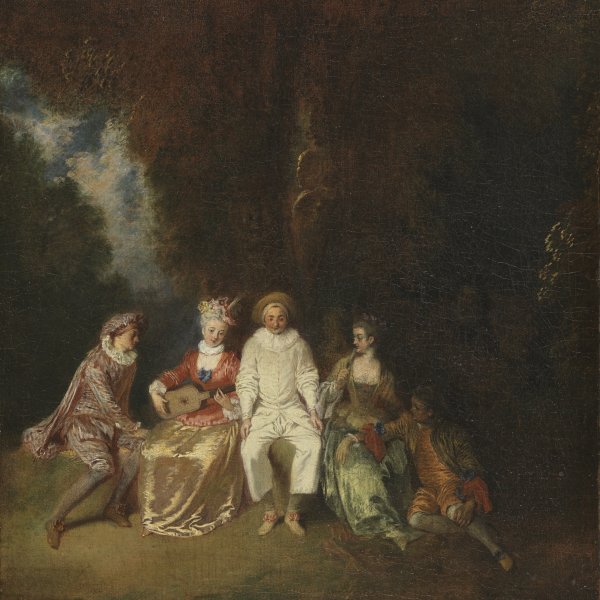Jean Antoine Watteau
Valenciennes, 1684 -Nogent-sur-Marne, 1721
Youngest son of Jean-Philippe Watteau, Jean-Antoine revealed an interest in painting from a very early age. He initially trained in his native city where he is documented in 1699 as a pupil of the painter Jacques-Albert Gérin. He left for Paris in 1702 where he began life drawing and during this early phase made contact with the Flemish community of artists living in the capital. Between 1705 and 1708 he worked with the printmaker and set designer Claude Gillot, in whose studio he became familiar with the commedia dell’arte characters and the world of the theatre and masks. Watteau is next documented with Claude Audran, whom he assisted on the decoration of the castle of La Muette. During this period Watteau had access to the art collection in the Palais du Luxembourg where he studied and admired the work of Rubens. Between 1708 and 1712 he undertook his first independent projects. Following a brief period in Valenciennes where he painted military scenes, he returned to Paris in 1710. His small-format paintings are set in gardens, filled with elegant figures engaged in conversation or playing instruments. Among Watteau’s most important works are: Fêtes venitiennes (National Galleries of Scotland, Edinburgh); The Embarkation for Cythera (Musée du Louvre, Paris) of 1717; The Garden of Love (Museo del Prado, Madrid); and L’Enseigne de Gersaint (Charlottenburg), the latter marking a change of direction in his work. Watteau died at Nogent-sur-Marne in 1721. Shortly after his death his friend and protector Jean de Jullienne had prints made of all his paintings and drawings, which contributed to the dissemination of his work throughout Europe. While Watteau’s style had numerous followers and imitators, Jean-Baptiste Pater was his only pupil.






